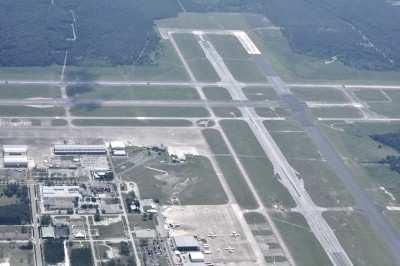Base Was Closed During BRAC In 1999
The team working on the reutilization of the former Naval Air Station Cecil Field, since its closure in 1999, received high praise and recognition July 31 when the EPA awarded them the 2019 Federal Facility Excellence in Site Reuse Award.

The award honors the innovative thinking and cooperation among federal agencies, states, tribes, local partners, and developers that have led to noteworthy restoration and reuse of federal sites under the Superfund program. This is the second year the EPA has presented these awards.
“These awards highlight the successes we have achieved through working cooperatively with our federal, state and local partners to restore properties in a manner that protects public health and serves as a catalyst for economic growth and community revitalization,” EPA Administrator Andrew Wheeler stated in his release announcing the winners.
Cecil Field won in the National Priorities List category for an installation closed due to a Base Realignment and Closure (BRAC) decision. Additionally, the team earned the National Federal Facility Excellence in Site Reuse Award, which designated it the best overall governmental reutilization program.
Following its closure, the 17,225-acre master jet base converted to a civic airport serving corporate aircraft, general aviation, air cargo, and National Guard and Reserve aviation operations. It also houses the City of Jacksonville’s Cecil Commerce Center, which is home to more than 31 million square feet of commercial and industrial locations. More than 6,000 people work at the various facilities on site.
This success occurred due to the hard work and cooperation of the BRAC Clean-up Team. The team was comprised of members from the EPA, the Florida Department of Environmental Protection, the Jacksonville Aviation Authority and the City of Jacksonville to ensure the former naval installation could be transformed into the existing facility.
“This is one of the first attempts at the development and use of ‘facilitated partnering’ and it proved to be very successful,” said Naval Facilities Engineering Command Southeast Executive Officer Capt. Thomas Bestafka who accepted the award on behalf of BRAC. “The partnership initiative methodology this BRAC team created and used over the years is now a model that is used for other environmental projects throughout the Navy.”
Bestafka thanked all of the partners involved in the project and especially members of the Navy’s BRAC Environmental team who were not able to attend the ceremony, Dave Barney and Mark Easterbrook. “The leadership they have provided among the Navy team and the BRAC Cleanup Team was outstanding,” he said.
The team’s goal was always to provide timely, cost-effective stewardship of the environmental responsibilities through innovative and sustainable approaches for the clean-up and transfer of the property while being protective of human health and the environment.
NAVFAC’s Environmental Restoration Program works day in and day out at all Navy installations (and BRAC sites) to identify, investigate and clean up former waste disposal sites on military property. The Navy is committed to cleaning up sites in an effective and efficient manner.
The environmental sustainment and clean-up efforts enabled the City of Jacksonville and the Jacksonville Aviation Authority to: upgrade existing utilities, demolish antiquated buildings, improve and expand existing hangars, build a new fire station, create a habitat for the endangered gopher tortoise, construct an equestrian center and recreation complex, and develop the only commercial, FAA-licensed horizontal launch spaceport facility on the east coast.
The Cecil Airport now produces an economic impact to the local area of nearly $750 million and ranked first among general aviation airports in Florida for total employment and payroll.
At the time of Cecil Field’s closure in 1999, 285 sites required environmental evaluation and 25 sites were being investigated as part of the installation restoration program. Now, all sites are in accordance with the Comprehensive Environmental Response, Compensation, and Liability Act (CERCLA) and the Florida Department of Environmental Protection (FDEP).
Although the property’s transformation has been impressive, more is yet to come. The Cecil Airport site already has more than 1 million square feet of office and hangar space available, and another 300,000 are in planning for future construction, said Rusty Chandler, the chief of industrial and commercial aviation for the Jacksonville Aviation Authority. There is hope of creating an air cargo hub, aviation training center and more.
“The economic benefit and the jobs base for the community will continue to grow, and we hope to solidify Northeast Florida as a center for aviation excellence,” he said. “This facility will have it all.”
(Source: U.S. Navy news release. Image from file)
 ANN's Daily Aero-Term (04.22.25): Landing Area
ANN's Daily Aero-Term (04.22.25): Landing Area ANN's Daily Aero-Linx (04.22.25)
ANN's Daily Aero-Linx (04.22.25) Airborne 04.23.25: CAF C-47 Skytrain, Tough Low-Level Drone Regs, NEW NOTAMs
Airborne 04.23.25: CAF C-47 Skytrain, Tough Low-Level Drone Regs, NEW NOTAMs Airborne 04.21.25: Charter Bust, VeriJet Woes, Visual Approach Risks
Airborne 04.21.25: Charter Bust, VeriJet Woes, Visual Approach Risks Aero-News: Quote of the Day (04.23.25)
Aero-News: Quote of the Day (04.23.25)



